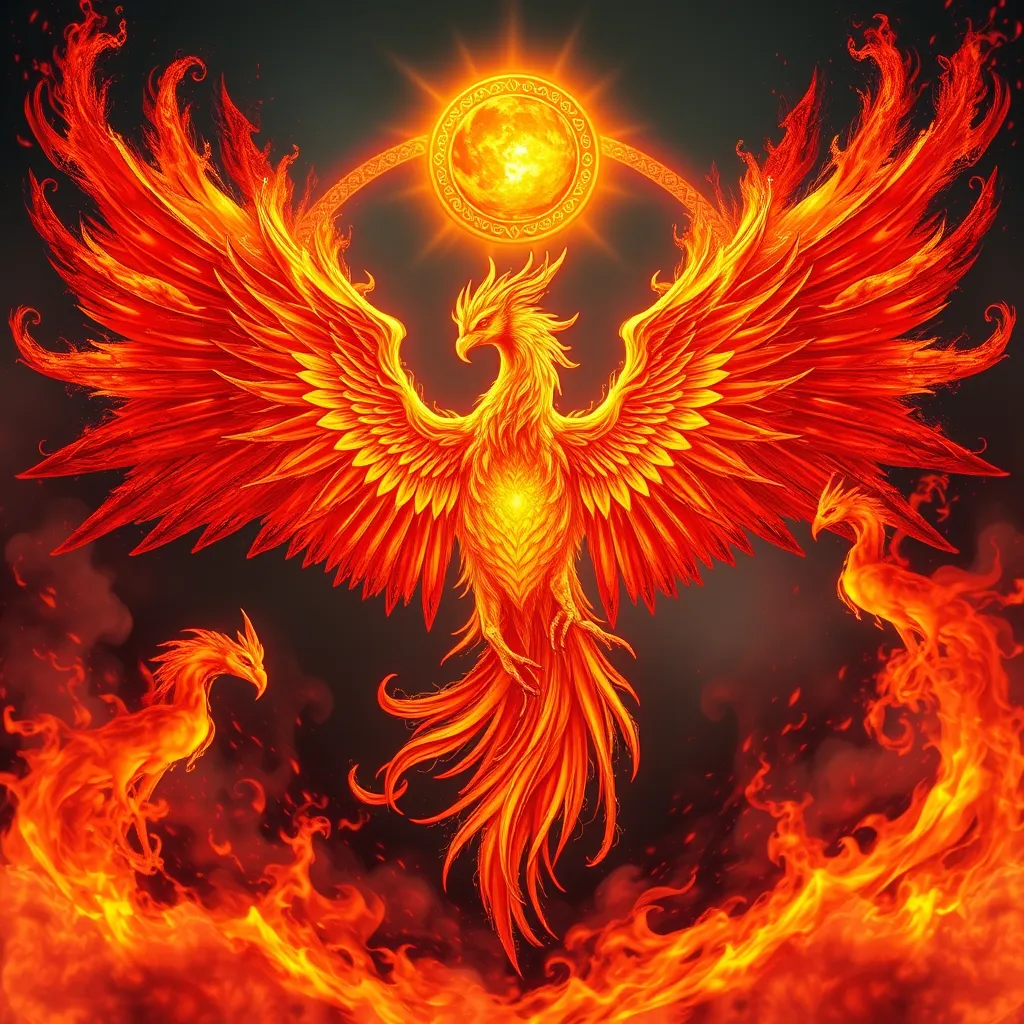The Phoenix in Celtic Mythology: The Celtic Bird of Fire and the Cycle of the Sun
Introduction to Celtic Mythology and the Phoenix
Celtic mythology is a rich tapestry of stories, symbols, and spiritual beliefs that have been passed down through generations. It encompasses a variety of deities, creatures, and natural elements that reflect the values and experiences of the Celtic people. Among these, the concept of the Phoenix stands out as a powerful symbol of renewal and rebirth.
The Phoenix, often depicted as a magnificent bird engulfed in flames, represents the cycle of life, death, and resurrection. In various mythological contexts, it is associated with themes of transformation and new beginnings. Its importance as a symbol of renewal resonates strongly within the Celtic tradition, where the cycles of nature and life are deeply revered.
Celtic Symbolism and the Element of Fire
Fire holds a significant place in Celtic culture, symbolizing passion, creativity, and transformation. It is not only a source of warmth and light but also a powerful agent of change. The Celts viewed fire as a sacred element, essential for rituals, celebrations, and daily life.
The connection between fire and transformation is evident in the way the Phoenix embodies these qualities. As a creature that rises from its own ashes, it encapsulates the transformative power of fire, signifying the end of one phase and the beginning of another. This embodiment of fire in the Phoenix makes it a fitting symbol within Celtic mythology.
The Phoenix as a Symbol of the Sun
The relationship between the Phoenix and solar symbolism is profound. In many mythologies, the Phoenix is closely linked to the sun, often seen as a solar deity or a creature that embodies solar qualities. The sun is a potent symbol of life, vitality, and renewal, mirroring the Phoenix’s ability to rise anew from its ashes.
In Celtic beliefs, the cyclical nature of the sun is celebrated through various festivals and rituals that mark the changing seasons. The Phoenix’s journey can be seen as a reflection of the sun’s daily and seasonal cycles:
- Sunrise: The rebirth of the sun each morning, akin to the Phoenix’s resurrection.
- Noon: The peak of vitality and energy, representing the fullness of life.
- Sunset: The decline into darkness, akin to the death of the Phoenix.
- Night: A time of rest and transformation before rebirth.
This cyclical relationship enhances the Phoenix’s role as a symbol of the sun, reinforcing its significance in Celtic mythology.
Legends and Tales Involving the Phoenix
While the Phoenix is not as commonly featured in Celtic mythology as in other traditions, there are notable myths and tales that highlight similar fire birds or transformative creatures. For instance, the Bran the Blessed myth features a magical bird that plays a crucial role in the story’s themes of death and resurrection.
Additionally, the Tuatha Dé Danann, a race of deities in Irish mythology, includes various figures who embody elements of transformation and renewal, akin to the Phoenix. These stories often depict the cycle of life and death, where characters undergo profound changes, symbolizing the Phoenix’s essence.
When comparing these tales with other cultural representations of fire birds, such as the Russian Firebird or the Greek Phoenix, we can observe similar themes of rebirth and transformation across different mythologies, highlighting a universal human fascination with the concept of renewal.
The Cycle of Rebirth: Life, Death, and Renewal
The Phoenix’s cycle of rebirth is a powerful metaphor within Celtic spirituality. This cycle embodies the natural rhythms of life, encompassing birth, death, and renewal. The Celts recognized these cycles in their agricultural practices, celebrating the changing seasons and the life cycles of crops.
This cyclical understanding can be illustrated through the agricultural calendar:
- Imbolc: The first signs of spring, symbolizing new beginnings.
- Beltane: A celebration of fertility and growth.
- Lughnasadh: The harvest festival, acknowledging the fruits of labor.
- Samhain: The time for honoring the dead and reflecting on the cycle of life.
These festivals mirror the Phoenix’s journey, emphasizing the significance of renewal and the interconnectedness of all living things in the cycle of life.
Artistic Representations of the Phoenix in Celtic Culture
The Phoenix has been depicted in various forms of Celtic art and symbolism. From intricate carvings to illuminated manuscripts, the imagery of the Phoenix reflects its significance as a symbol of transformation and rebirth.
Examples of artifacts and artworks that feature Phoenix-like imagery include:
- The Book of Kells: Illuminated manuscripts that showcase vibrant illustrations and intricate designs.
- Celtic crosses: Many crosses incorporate motifs that may symbolize the flames of the Phoenix.
- Stone carvings: Ancient stones often feature symbols that evoke the essence of fire and rebirth.
Over time, the artistic representations of the Phoenix have evolved, yet its core symbolism as a creature of fire and renewal remains consistent throughout Celtic culture.
Modern Interpretations and Influence of the Celtic Phoenix
The concept of the Phoenix has found its way into contemporary culture, influencing literature, art, and popular media. Today, the Phoenix is often used as a metaphor for resilience and the ability to overcome adversity, resonating with audiences in various forms.
In literature and film, the Phoenix frequently appears as a character or symbol of hope and transformation. Its enduring legacy is evident in:
- Fantasy novels: Where the Phoenix serves as a powerful ally or a symbol of rebirth.
- Artistic representations: Modern artists draw inspiration from the symbolism of the Phoenix in their work.
- Popular culture: References in movies and music that highlight themes of renewal and resilience.
The Celtic Phoenix continues to inspire and connect with individuals seeking meaning and understanding in their lives.
Conclusion: The Enduring Legacy of the Phoenix in Celtic Mythology
The Phoenix stands as a timeless symbol of renewal and hope within Celtic mythology. Throughout this exploration, we have seen its significance in relation to fire, the sun, and the cycles of life and death. The stories, artistic representations, and modern interpretations of the Phoenix illustrate its enduring legacy and relevance.
As we reflect on the Phoenix’s journey, we are reminded of its powerful message: that from the ashes of despair can rise new life, symbolizing hope and the promise of new beginnings. The Phoenix’s connection to Celtic heritage continues to inspire, reminding us of the beauty and resilience inherent in the cycles of life.



